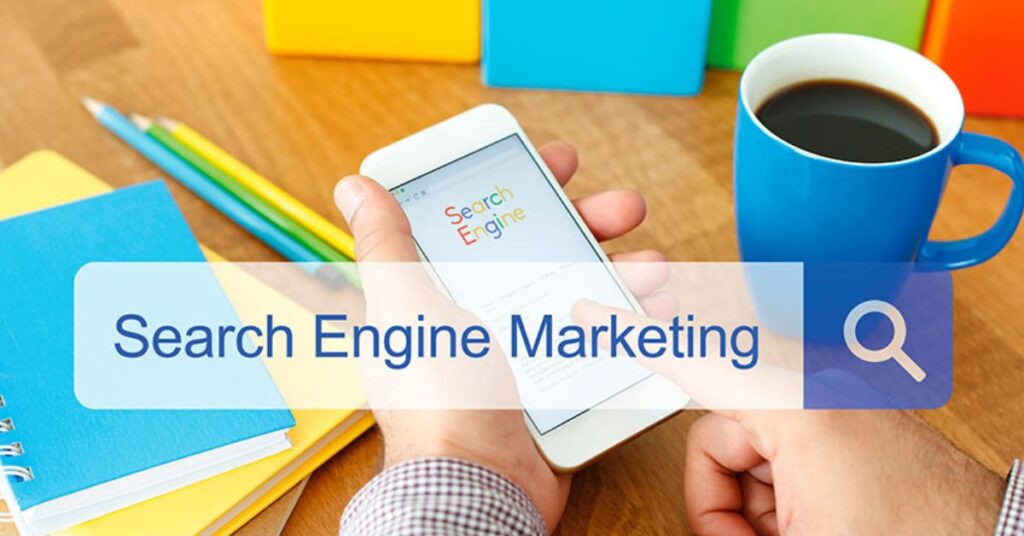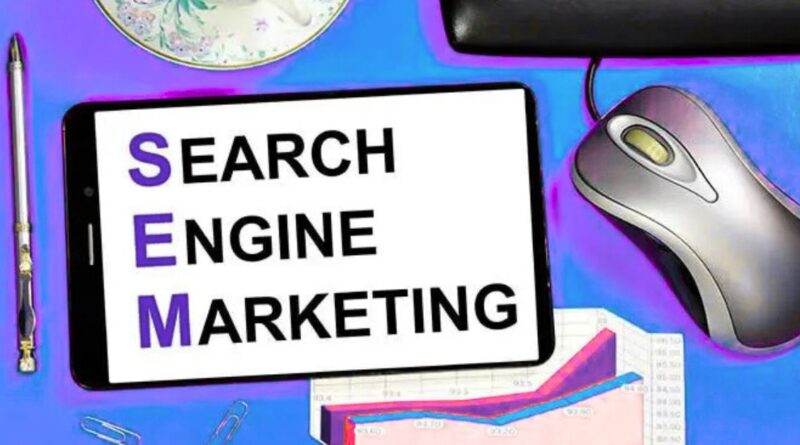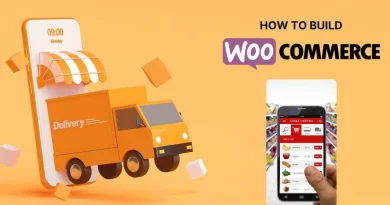How to Learn Search Engine Marketing: A Step-by-Step Guide
Search Engine Marketing (SEM) is one of the most powerful and measurable digital marketing channels available today. For businesses of all sizes, it represents a direct line to potential customers who are actively searching for solutions. Whether you’re looking to advance your career, grow your own business, or simply understand the digital landscape, mastering SEM is an invaluable skill. This guide is designed to take you from a complete beginner to a competent SEM practitioner. We’ll break down the complex world of SEM into a structured, actionable learning path.
What Exactly is Search Engine Marketing (SEM)?
Let’s start with a clear definition. SEM is the practice of marketing a business using paid advertisements that appear on search engine results pages (SERPs). The goal is to increase a website’s visibility in search engines through paid efforts, primarily via pay-per-click (PPC) advertising.
A Crucial Distinction: SEM vs. SEO
It’s impossible to talk about SEM without mentioning its organic counterpart, Search Engine Optimization (SEO).
-
SEO is the process of optimizing your website and content to earn free, organic traffic from search engines. It’s a long-term strategy.
-
SEM encompasses paid strategies to appear on SERPs. It’s often used for short-term gains, testing new markets, or competing for highly competitive keywords.
Think of it this way: SEO is about earning your spot, while SEM is about paying for your spot. A robust digital marketing strategy almost always includes both.
Phase 1: Laying the Foundation (Weeks 1-2)
Before you dive into platforms and start spending money, you need a solid understanding of the core principles.
1. Understand the Auction System: How PPC Really Works
Unlike traditional advertising where you pay for ad space, PPC operates on an auction system. When a user enters a search query, Google runs a lightning-fast auction to determine which ads show and in what order. It’s not just about who bids the most money. Google uses a formula:
Ad Rank = Maximum Bid × Quality Score
-
Maximum Bid: The highest amount you’re willing to pay for a click.
-
Quality Score: A metric (on a scale of 1-10) that Google assigns to your keywords based on three factors:
-
Expected Click-Through Rate (CTR): How likely your ad is to be clicked.
-
Ad Relevance: How well your ad matches the user’s search intent.
-
Landing Page Experience: How relevant and useful your landing page is to the user.
-
A high-quality score means you can often win ad positions for less than your maximum bid, making your campaigns more efficient and cheaper.
2. Master Key Terminology
You need to speak the language. Here are the essential terms:
| Term | Acronym | Definition |
|---|---|---|
| Pay-Per-Click | PPC | The advertising model where you pay each time someone clicks your ad. |
| Cost-Per-Click | CPC | The actual amount you are charged for a single click on your ad. |
| Click-Through Rate | CTR | The percentage of people who see your ad and click on it. (Clicks ÷ Impressions) |
| Conversion Rate | CVR | The percentage of clicks that result in a desired action (e.g., a sale, sign-up). (Conversions ÷ Clicks) |
| Cost-Per-Acquisition | CPA | The average cost to acquire a customer. (Total Spend ÷ Conversions) |
| Return on Ad Spend | ROAS | The revenue earned for every dollar spent on advertising. (Revenue ÷ Ad Spend) |
| Quality Score | QS | Google’s rating of the quality and relevance of your keywords and ads. |
| Impressions | The number of times your ad is shown. | |
| Search Query | The actual term a user typed into the search engine. |
3. Choose Your First Platform: Google Ads
While Microsoft Advertising (formerly Bing Ads) is also important, Google Ads is the industry giant, commanding over 90% of the search market share. Your learning should start here. The principles you learn on Google Ads are largely transferable to other PPC platforms.
Phase 2: Deep Dive into Google Ads (Weeks 3-6)
Now it’s time to get your hands dirty with the platform itself.
1. Campaign Structure: The Bedrock of Success
A well-organized account is the single biggest predictor of success. Google Ads is structured hierarchically:
Account > Campaigns > Ad Groups > Keywords and Ads
-
Campaign: The foundation level where you set a budget, geographic targets, and bidding strategy. A campaign should represent a broad business goal (e.g., “Brand Awareness,” “Product Sales,” “Lead Generation”).
-
Ad Group: A subset of a campaign focused on a tightly themed set of keywords. Each ad group contains a set of similar keywords and 2-3 ads that are highly relevant to those keywords.
-
Good Structure: A campaign for “Running Shoes” with separate ad groups for “men’s running shoes,” “women’s running shoes,” “best trail running shoes.”
-
Bad Structure: One giant ad group containing all keywords: “men’s shoes,” “Nike Air Max,” “buy cheap shoes online.”
-
2. Keyword Research: Finding Your Audience
Your keywords are the bridge between user intent and your ad. This is a critical skill.
-
Keyword Match Types: These control how closely a user’s search query must match your keyword to trigger your ad.
-
Broad Match: Triggers ads for synonyms, related searches, and variations. (High traffic, low intent).
-
Phrase Match: Triggers ads for searches that include the exact phrase in order. (e.g., “red tennis shoes” would trigger for “cheap red tennis shoes”).
-
Exact Match: Triggers ads for searches that are exactly the keyword or close variations. (e.g., [red tennis shoes] triggers for “red tennis shoes” or “red tennis shoe”). Highest intent, most control.
-
-
Tools: Use Google’s Keyword Planner (free with an Ads account), SEMrush, Ahrefs, or Moz to find keyword ideas, search volume, and competitiveness.
3. Ad Copy and Extensions: Writing to Convert
Your ad has mere seconds to capture attention and compel a click.
-
Ad Copy: Follow a clear structure: a compelling Headline, a description that highlights your Unique Selling Proposition (USP), and a strong Call-to-Action (CTA).
-
Ad Extensions: These are free additions to your ad that provide more information and increase your ad’s real estate. Always use them!
-
Sitelink Extensions: Link to specific pages on your site (e.g., “View Our Menu,” “Contact Us Today”).
-
Callout Extensions: Highlight features or benefits (e.g., “Free Shipping,” “24/7 Support”).
-
Structured Snippet Extensions: Detail specific aspects of your products or services (e.g., Brands: Nike, Adidas; Services: Installation, Repair).
-
4. Bidding and Budgeting: Controlling the Purse Strings
You tell Google how to spend your money through bidding strategies.
-
Manual CPC: You set the maximum CPC for your keywords. Full control, but time-consuming.
-
Automated Bidding: Google’s machine learning algorithms set bids for you to achieve a specific goal.
-
Maximize Clicks: Get as many clicks as possible within your budget.
-
Target CPA: Google tries to get you conversions at a Cost-Per-Acquisition you set.
-
Target ROAS: Google tries to achieve a Return On Ad Spend you set.
-
Start with a conservative daily budget and a simpler automated strategy like “Maximize Clicks” to gather data before moving to more advanced goal-based bidding.
5. Landing Pages: The Conversion Engine
The click is just the beginning. The landing page is where the conversion happens. It must be:
-
Relevant: Directly connected to the ad and the keyword searched.
-
Fast: Loads quickly on both desktop and mobile.
-
Clear: Has a single, obvious goal and a compelling CTA.
Phase 3: Measurement, Analysis, and Optimization (Ongoing)
Launching a campaign is just the start. The real work is in the analysis.
1. Tracking Conversions
This is non-negotiable. How can you know if your ads are working if you aren’t tracking what matters? Set up conversion tracking in Google Ads. A conversion can be:
-
A purchase on an e-commerce site
-
A form submission (e.g., for a quote or contact)
-
A phone call
-
A file download
2. Key Metrics to Monitor
Don’t get lost in the data. Focus on these key reports:
| Report / Metric | What It Tells You | How to Use It |
|---|---|---|
| Search Terms Report | The actual queries that triggered your ads. | Find negative keywords to block irrelevant traffic and discover new, relevant keywords to add. |
| Quality Score | The health and relevance of your keywords. | Improve ad copy and landing pages for keywords with a low score. |
| Click-Through Rate (CTR) | How compelling your ads are. | Test new ad copy to improve CTR. |
| Cost-Per-Acquisition (CPA) | The efficiency of your campaign in achieving its goal. | Adjust bids, improve landing pages, or refine targeting if CPA is too high. |
| Return on Ad Spend (ROAS) | The profitability of your campaign. | The ultimate measure of success. Optimize everything to improve ROAS. |
3. The Cycle of Optimization
SEM is a continuous process of testing and improvement.
-
A/B Testing (Split Testing): Always run multiple ads per ad group. Test different headlines, descriptions, and CTAs to see what resonates best with your audience.
-
Negative Keywords: Regularly add negative keywords to prevent your ads from showing for irrelevant searches, saving you money.
-
Bid Adjustments: Adjust bids for specific devices, locations, or times of day that perform better or worse.
Phase 4: Expanding Your SEM Knowledge (Beyond Google)
Once you’re comfortable with Google Ads, broaden your horizons.
1. Microsoft Advertising (Bing Ads)
The second-largest search network. It often has a lower CPC and reaches an audience that is typically older and has a higher average income. The interface is very similar to Google Ads, making the learning curve gentle.
2. YouTube Advertising (Video)
Part of the Google Ads ecosystem, YouTube allows you to run video ads. This is a form of paid search based on user interests and behaviors rather than typed keywords.
3. Social Media Advertising
While not “search” in the traditional sense, platforms like Meta (Facebook & Instagram), LinkedIn, and TikTok have powerful intent-based advertising systems where users are “searching” for content and products in their feeds. The targeting is often more demographic and interest-based.

How to Practice SEM Without Spending a Fortune
You don’t need a huge corporate budget to learn.
-
Google Ads Sandbox: Use the Google Ads preview mode to practice building campaigns without spending real money.
-
Google Skillshop: Enroll in the free Google Ads courses and certifications. This is some of the best training available.
-
Manage a Small Budget: For a local non-profit, a friend’s small business, or even your own blog. A budget of $5-$10 a day is enough to generate real data and learn the ropes.
-
Use SEM Simulation Games: Online tools like WordStream’s Google Ads Performance Grader or SEMrush’s PPC Toolkit can analyze your account (or give you simulated data) and provide feedback.
Essential Resources for Learning SEM
Free Resources:
-
Google Ads Help Center: The official source. Incredibly comprehensive.
-
Google Skillshop: Free certifications for Google Ads, Analytics, and more.
-
YouTube Channels: Surfside PPC, Google Ads, Paid Media Pros.
-
Blogs: WordStream Blog, Search Engine Land, PPC Hero.
Paid Resources & Tools:
-
Courses: platforms like Coursera, Udemy, and LinkedIn Learning have excellent SEM courses.
-
Industry Tools: SEMrush, Ahrefs, and Moz (primarily SEO tools but have fantastic PPC competitive analysis features).
-
Books: “Ultimate Guide to Google Ads” by Perry Marshall & Bryan Todd (a classic).
Crafting Your SEM Learning Plan: A 12-Week Schedule
| Week | Focus Area | Key Activities |
|---|---|---|
| 1-2 | Foundation | Learn core concepts (PPC, CPC, CTR, QS). Complete Google’s “Fundamentals of Digital Marketing” course on Skillshop. |
| 3-4 | Platform Familiarity | Create a Google Ads account. Explore every tab. Complete the Google Ads Search Certification on Skillshop. |
| 5-6 | Execution | Build a mock campaign for a fake business. Practice keyword research, ad copy writing, and structuring ad groups. |
| 7-8 | Measurement | Learn how to set up Google Analytics and conversion tracking. Analyze the mock campaign’s potential metrics. |
| 9-10 | Optimization | Study A/B testing, negative keywords, and bidding strategies. Run a real campaign with a tiny budget ($2/day). |
| 11-12 | Expansion | Explore Microsoft Advertising. Learn about YouTube ad formats. Start following industry blogs to stay current. |
Conclusion
Learning Search Engine Marketing is a journey, not a destination. The algorithms change, new features are released, and user behavior evolves. The foundational principles of relevance, quality, and data-driven decision-making, however, remain constant. Start with the basics, practice relentlessly (even with pretend money), and never stop experimenting and learning. By following this structured path, you will build the knowledge and confidence to wield SEM as a powerful tool for growth, whether for your career or your business. The search for customers is happening right now. It’s time to make sure they find you.
Frequently Asked Questions (FAQs)
I’m a complete beginner. Is SEM hard to learn?
A: The basics of SEM are not inherently difficult to grasp. Concepts like bidding on keywords and writing ads are intuitive. The challenge and complexity come from the strategic thinking, continuous optimization, and data analysis required to run successful, profitable campaigns. With a structured learning approach and hands-on practice, anyone can develop proficiency.
How long does it take to become proficient in SEM?
A: You can understand the core mechanics and run a basic campaign within a few weeks. However, achieving true proficiency where you can consistently manage campaigns that deliver a strong return on investment (ROI) typically takes 6 to 12 months of consistent practice, study, and real-world experience.
What is the most important concept for a beginner to understand?
A: Quality Score. It’s the linchpin of efficient SEM. Understanding that you aren’t just bidding against competitors but are also graded on the relevance and quality of your ads and landing pages will save you money and make your campaigns more effective from the start.
Do I need to be good at math to do SEM?
A: You don’t need advanced math, but you must be comfortable with basic metrics and formulas. You’ll constantly work with percentages (CTR, CVR), ratios (ROAS), and averages (CPA). A data-driven mindset and analytical thinking are far more important than complex calculus.
What’s the difference between Google Ads and Google Analytics?
A: They are two sides of the same coin.
-
Google Ads is for acquisition: you use it to create and manage your paid advertising campaigns.
-
Google Analytics is for analysis: it tracks what users do after they click your ad (e.g., how long they stay, which pages they visit, if they make a purchase). Linking the two is crucial for measuring the true value of your SEM efforts.
How much money do I need to start practicing SEM?
A: You can start with $0 using the Google Ads sandbox and free courses. For a real, live campaign, you can learn a great deal with a very small budget of $5-$10 per day. The goal isn’t to get massive sales initially, but to generate real data for analysis and learning.
Which certification is most valuable for getting an SEM job?
A: The Google Ads certifications from Skillshop are the industry standard and the most recognized by employers. Focus on the Google Ads Search Certification first. Additionally, certifications for Google Analytics and Microsoft Advertising are highly valuable additions to your resume.
What are the biggest mistakes SEM beginners make?
A:
-
Poor Account Structure: Throwing all keywords into one ad group.
-
Ignoring Negative Keywords: Wasting money on irrelevant clicks.
-
Not Tracking Conversions: Not knowing what’s actually driving sales or leads.
-
Focusing on Vanity Metrics: Prioritizing clicks and impressions over conversions and ROAS.
-
Sending Traffic to the Homepage: Using generic landing pages instead of specific, relevant ones.
Is SEM still effective with the rise of social media marketing?
A: Absolutely. SEM targets user intent people actively searching for a solution. Social media marketing often targets users based on demographics and interests who may not be actively looking to buy. They serve different purposes in a marketing funnel. SEM is often the most direct channel for capturing high-intent demand.
What’s a “good” CTR, CPC, or Conversion Rate?
A: There is no universal answer. These metrics vary drastically by industry, country, keyword competition, and campaign goal. For example, the average CTR for the legal industry is much higher than for the travel industry. Use industry benchmarks as a rough guide (tools like WordStream publish these), but focus primarily on improving your own metrics over time.
Should I use automated bidding as a beginner?
A: Yes, but with understanding. Starting with a simpler automated strategy like Maximize Clicks can help you gather data quickly. The key is to transition to goal-based automated bidding (like Target CPA or Target ROAS) as soon as you have enough conversion data (typically 15-30 conversions in a 30-day period) for Google’s algorithm to learn from.
How crucial is it to learn SEO if I want to specialize in SEM?
A: Extremely crucial. While they are different disciplines, they are deeply interconnected. Understanding SEO gives you insight into keyword intent, quality content, and the user journey. Many businesses integrate their SEM and SEO strategies (e.g., using SEO data to inform PPC keyword strategy). Being proficient in both makes you a far more valuable digital marketer.
What are the career paths for someone skilled in SEM?
A: SEM skills are in high demand. Common career progressions include:
-
PPC / SEM Specialist
-
Digital Marketing Manager
-
Growth Marketing Manager
-
Performance Marketing Manager
-
Freelance PPC Consultant
-
In-house Marketing Lead for a brand
How do I stay updated with the constant changes in SEM?
A: The industry evolves rapidly. To stay current:
-
Follow Industry Blogs: Search Engine Land, Search Engine Journal, PPC Hero.
-
Subscribe to Official Channels: Google Ads Blog, Microsoft Advertising Blog.
-
Join Communities: Reddit’s r/PPC, LinkedIn groups, and specialized marketing forums.
-
Attend Webinars and Conferences: Many are free and offer cutting-edge strategies.




